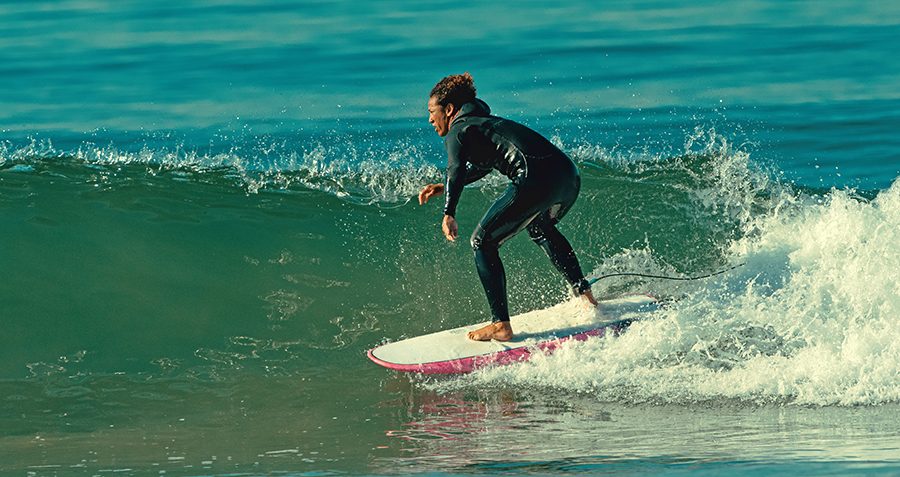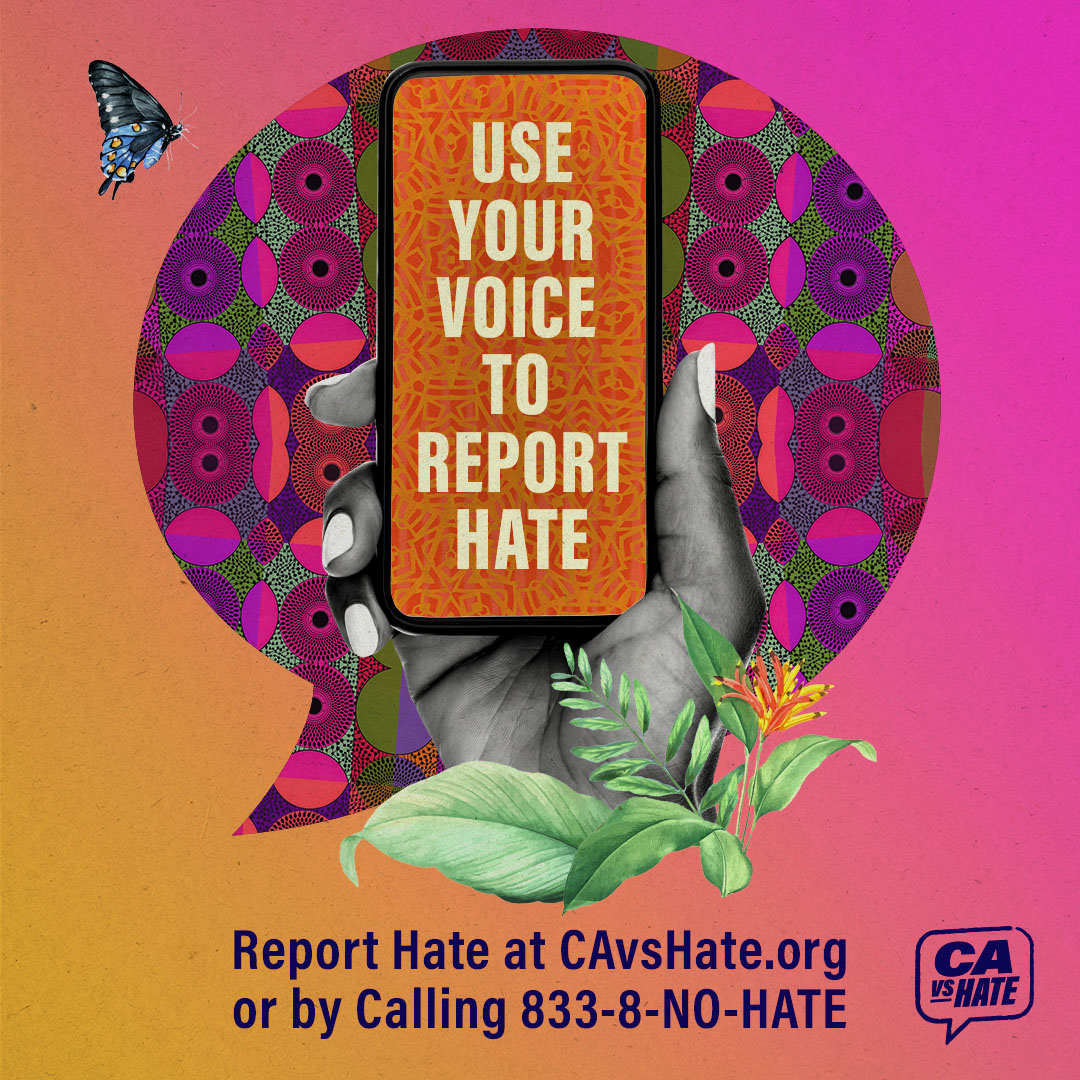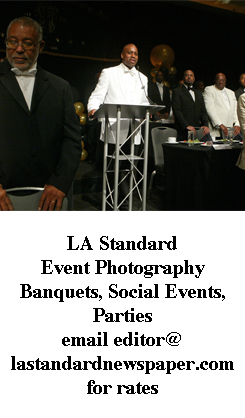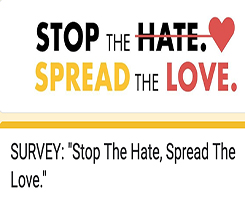“Wade in the Water: A Journey into Black Surfing and Aquatic Culture” explores the history of Black surfing from Africa to the United States while local Black surfing organizations are promoting the sport, hosting free lessons, and celebrating Black beach culture.
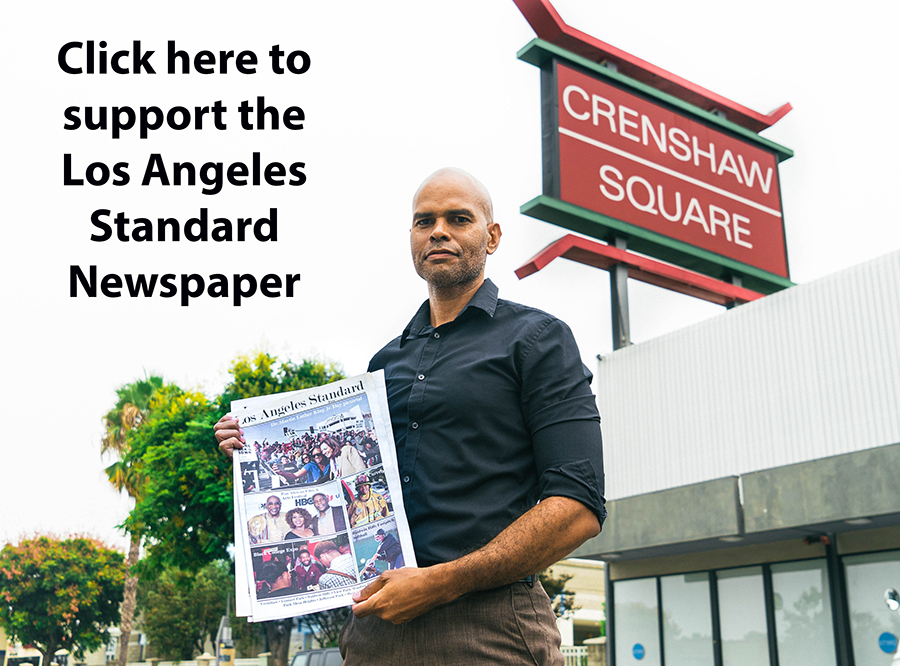
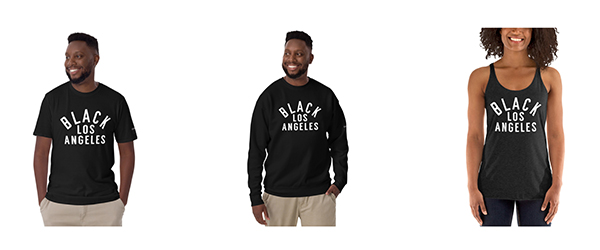
By Jason Lewis
A longstanding stereotype about African Americans is that they cannot swim. Unfortunately, there is more truth than myth to that stereotype and it caught filmmaker David Mesfin off guard when he moved to the United States.
“I come from Africa, from Ethiopia, and I arrived here in the 1980s,” he said. “People were saying that Black people don’t swim. And I’m like, ‘Where does that come from?’ It made no sense to me. I lived in a country where everybody swam. We had the Nile River.”
During segregation Black people were denied access to many beaches and also to public swimming pools around the nation, including here in Southern California, so a high percentage of Black people did not have the opportunity to learn how to swim. This was a dramatic shift from what their ancestors along the western shores of Africa experienced, where swimming and water activities such as surfing were a way of life. Mesfin has done extensive research on the history of Black people surfing in Africa and in the U.S., which led him to creating the documentary “Wade in the Water: A Journey into Black Surfing and Aquatic Culture.”
“The documentary looks into the 1,000-year history of surfing from Senegal to Angola, and also the connection between Africa, and African American surfers in the Americas,” he said. “I came across the quote that Professor Kevin Dawson wrote that a thousand years back, surfing independently was developed from Senegal to Angola. That was really the tipping point for me to begin the project. Through the research I found some interesting stories about Africa, and also individuals and organizations in Southern California about surf culture there (Africa) and here.”
Historically in the United States, Black people have not been prominent on the surfing scene, but Mesfin’s documentary shows that West Africans and Africans who were enslaved in the Americas were known for their swimming abilities.
“With surfing, the first written account of surfing was 1640 (in Africa),” he said. “And the first account of surfing in Hawaii was in 1776. When the Portuguese were working their way through the west coast of West Africa, a German traveler who was traveling with them ended up writing about seeing a mother teaching her children how to surf. He saw a woman strapping her kids on a shortboard and throwing them into the water and they were catching waves. That was the first account. It’s important that we celebrate that, that the first account of surfing was in Africa. But then again the history, which goes back 1,000 years, for Africans to learn to use kayaks to go over these waves, they used what was called surf canoes. Surf canoes existed 1,000 years back, so if surf canoes existed, that means surfing existed.
“Through the Middle Passage as Africans came into the Americas, there are stories in the Caribbean where the slavers found out that the Africans were great divers, and that they could hold their breath for a long time. One of the things that they discovered was that they could use them to dive and retrieve sunken gold from the Spaniards. The only people who could retrieve it were the Africans. In current day, all of that gold could amount to trillions of dollars.”
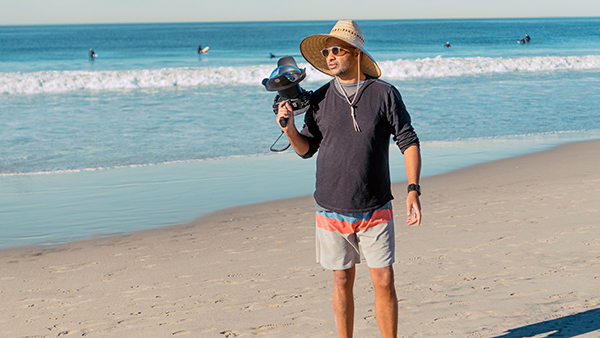
Mesfin named his documentary after the spiritual “Wade in the Water,” which is associated with the Underground Railroad. Enslaved Black people who were escaping to northern states were told to use rivers and the ocean so that the dogs could not pick up their scent. The fight for freedom during slavery turned into a fight for equality after the Civil War. During segregation and the Civil Rights Movement, Black people had to fight for basic rights, which included the right to beaches and public swimming pools.
“As African Americans fought back for the right to use pools and the ocean they held demonstrations, like the 1964 demonstration in St. Augustine, Florida that was led by Martin Luther King, Jr.,” Mesfin said. “Those demonstrations were called ‘wade-ins.’ They would go to the beach and the pool and they’d stand. Wading was a very important part of the African-American experience. The oceans and rivers were used to demonstrate for our rights. Now, with Black Lives Matter, we’re reconnecting with the ocean.”
Mesfin’s documentary features Dr. Alison Jefferson, who has done extensive research on Black people being denied access to beaches and other leisure sites in the Los Angeles area. Surfer Tony Corley, who created the first Black surfers association in 1974 is featured. And the documentary touches on the difficulties that Black surfers have had in more recent years, several decades beyond the Civil Rights Movement.
“The thing about surfing is that it was a territorial sport,” Mesfin said. “Surfers are in their own surfing culture. They are, not all, but some are very aggressive. In context of African Americans, it is quite scary to be out in the water and you’re one against 40 White dudes. So you have to be careful about where you go out and who you surf with; unless they see you out there out in the water often.”
With the rise of the modern social justice movement, many Black surfing organizations have been created, with several of them being in the Los Angeles area.
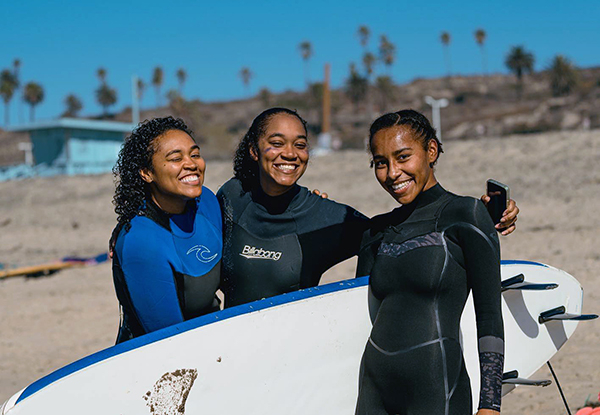
“The younger generations have come up post-Black Lives Matter with groups such as Black Surfers Collective (@blacksurferscollective), Color the Water (@colorthewater._), So Fly Surf School (@soflysurfschool), and Ebony Beach Club (@ebonybeachclub),” Mesfin said. “We have some in Northern California. Black.Surfers (@black.surfers). There are so many organizations that are being created.”
The Black Surfers Collective hosts free monthly surfing classes at the Inkwell in Santa Monica, which was one of the few beaches accessible to Black people during segregation. Ebony Beach Club hosts a monthly “Beach Bounce” which features surfing lessons and music. Also Intrsxtn Surf (@intrsxtn_surf), a surfing group for women of color, hosts events at local beaches. On September 16 at the Huntington Beach Pier, the second annual ‘A Great Day in the Stoke’ will take place. Last year it was one of the largest gatherings of Black surfers in Southern California. For more information follow @agreatdayinthestoke on Instagram.
For more information on “Wade in the Water: A Journey into Black Surfing and Aquatic Culture,” visit www.wadeinthewaterproject.com


